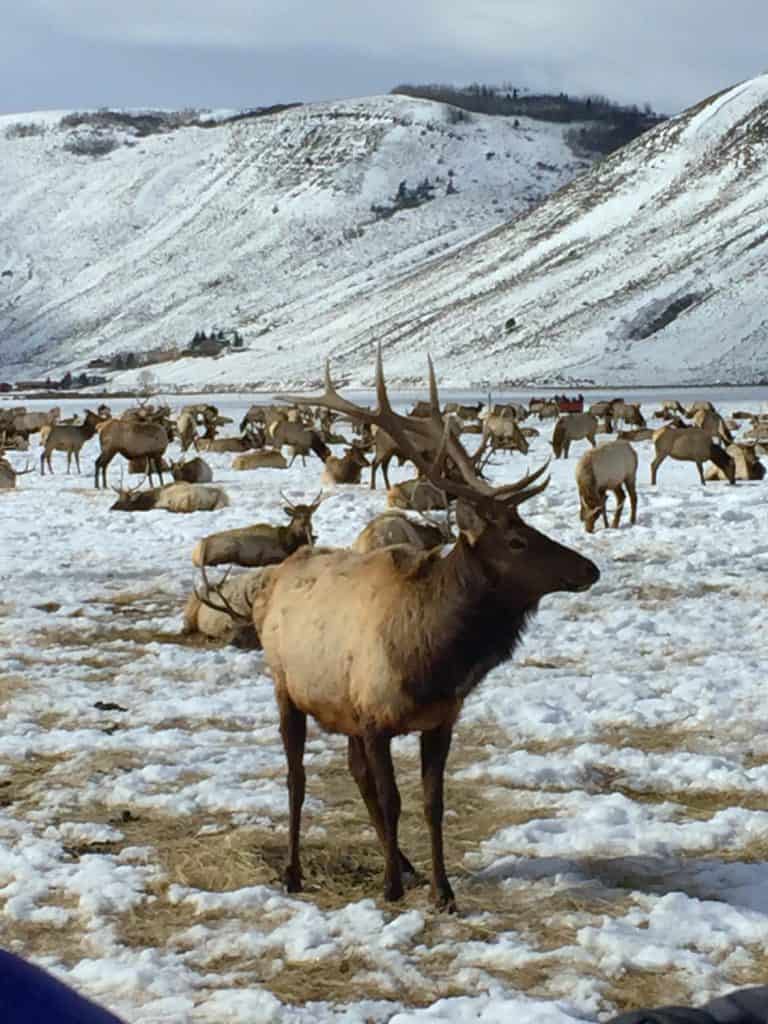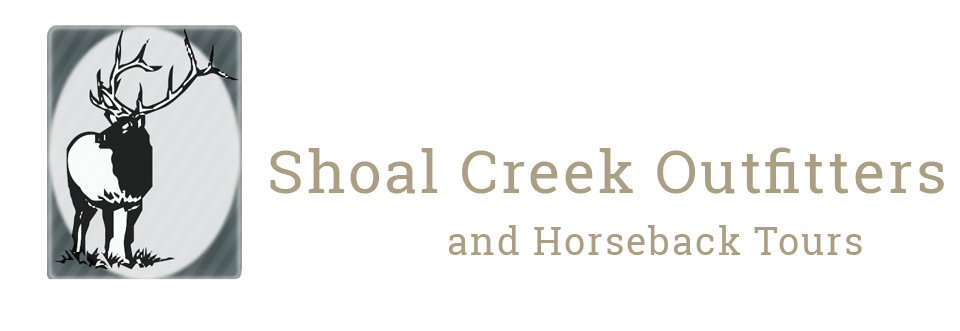You’ve drawn your elk tag, bought your conservation stamp, booked one of our guides, and are now impatiently looking at the calendar and counting the days until your departure. It can be hard to pass the months in between planning and the hunt itself (trust us – we get it!) But don’t worry. We have a list of things that can help you prepare to truly enjoy the hunt of a lifetime and help pass the time. Our guides have worked with hundreds of people of all ages and stages of life, and these are some of the tips they’ve seen help hunters enjoy success across the board.
Practice Shooting – A Lot
Whether you’re an experienced hunter or this is one of the first hunts you’ve ever been on, it always helps to familiarize yourself with the weapon you’ll be using. If you succeed, you’ll be taking a life, and you owe it to that animal to deliver as quick, clean, and painless of a death as possible. Plus, it’s heartbreaking to have covered miles of rough terrain on both horseback and foot, found the perfect animal, have eased into the perfect spot… and then miss your shot, only to watch him disappear into the dark timber, never to be seen again. We’ve all been there – it’s pretty much an inevitable part of hunting – but you can lower the chances of it happening with plenty of practice!
Of course, the very best way to practice is with the rifle or bow you’ll be using during the hunt itself. Use the same bullets or arrows that you’ll be taking on the hunt, the same optics and sighting systems, the same shooting sticks, etc. to make sure the familiarity is there when you’re staring down that huge bull or buck. You’ll probably feel at least some “buck fever,” so the less you have to worry about when setting up your shot, the better!
It also helps to practice shooting from a variety of positions. Shooting from standing, kneeling, sitting, and prone positions if you’re using a rifle will make you more versatile and confident, as will practicing with and without a dead rest or shooting sticks. Shooting from a standing and kneeling position with your bow will also benefit you in the long run if that’s what you’ll be hunting with. And don’t forget to vary how far away your targets are. You never know if your animal is going to be 20 yards away or 300 yards away, so it’s best to be able to reliably hit as wide a range of targets as possible.
Though practicing with your hunting rifle or bow is the best, it’s just good to get out and shoot period. .22 ammunition is often cheaper than most hunting calibers, and shooting them still helps train your mind and body to know what to do. Don’t neglect your hunting rifle, but don’t think that shooting ‘littler’ guns doesn’t count – they’re far better than nothing at all!
Get In Shape
Backcountry hunting on horseback is physically demanding – in fact, it might be one of the toughest things you’ll do. We often traverse many miles in a single day across rough terrain with no trails. Your sure-footed and experienced horse will carry you confidently, but you’ll be surprised how much work it takes to stay in the saddle, especially when you’re getting tired! There will also be plenty of times when we’ll all dismount and hike on our own two feet. Again, the Gros Ventre and Bridger-Teton wildernesses are extremely rugged and where we’ll be, there are no trails. Trust us, one of the best things you can do to pass the months in between planning and hunting is to get in shape!
We’ll be doing a lot of riding and hiking at high altitudes. While you might not be able to prepare fully for the decrease in oxygen if you’re from a lower elevation, you can still do a lot to help your body adjust as quickly as possible. Start with getting on the treadmill or elliptical and walking – or even better, take long walks outside and enjoy the fresh air! If there are nature trails in your area, take advantage of them. Bring the whole family and a picnic for a fun Saturday activity! If you’re already in good shape, definitely do your best to maintain your fitness and increase your cardio where possible. Your heart and lungs will be your biggest allies during your hunt, so it pays to help them be strong. Being in better shape can also help your body adjust to the demands of higher altitudes more quickly and fully during your time with us.

Make Sure Your Gear Is Up To Scratch
There’s nothing more miserable than being soaked to the skin, far from any material comfort, and starting in on Stage 1 Hypothermia. Unfortunately, we’ve had to stop hunts before to get hunters warm and dry, because the unforgiving conditions in our hunting areas can quickly lead to emergency situations. We often say that our number one goal is to help you fill your tag, but that’s not actually true. Our number one priority is keeping you safe and healthy – with filling your tag a close second, of course. You can help us (and yourself) by making sure your gear is up to scratch.
If you’ll be rifle hunting in the later parts of the season, be prepared for cold! Pack clothing in layers, starting with a thermal base layer that will lock in your body heat against frigid mornings and nights. Next, pile on warm pants and shirts/sweaters. Finally, make sure your outer shell is waterproof. Since the weather can be unpredictable and you’ll probably do at least some sweating while we hike, dressing in layers can make it easier for you to cool off by removing one or two if needed. They’ll be waiting for you, warm and dry, when you need them!
If you’re hunting in the earlier part of the season, prepare for both warm and cold. You never know what type of weather the high country will see, so be sure to have sturdy, waterproof clothing available, including gloves, warm socks, a winter hat, and a rain jacket or slicker.
If you have any questions about preparing for your hunt, please don’t hesitate to give us a call! We look forward to seeing you in the fall and can’t wait to share this adventure with you.

